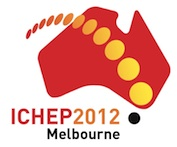Speaker
Ms
Giulia Casarosa
(SLAC & INFN (IT))
Description
We present a measurement of the D0-antiD0 mixing and CP-violation parameters y_CP and Delta y using the full BABAR dataset. We reconstruct samples of D*-tagged and untagged D0 decays to the final states K+K-, K+/-pi-/+ and pi+pi-. From a simultaneous fit to the different channels, we extract the effective lifetimes of the D0 decaying to the CP-even final states and the flavor-specific final state, and combined them into the mixing parameter y_CP and the CP-violation parameter Delta y. Utilizing the full dataset, new track reconstruction, optimized event selection, and the simultaneous fit to both tagged and untagged samples, we improve both the statistical and the systematic errors with respect to all previous measurements.
CP violation in the charm system is predicted to be small, yet evidence for direct CP violation has been reported by the LHCb experiment in 2-body D0 decays. A full understanding of the effect requires CP measurements in multibody decays as well. Using the full BABAR Upsilon(4S) data set, we investigate CP violation in the decay D+ --> K+K-pi+. In addition to the overall decay-rate asymmetry, we present CP violation results using model-dependent and model-independent Dalitz-plot analyses.
Recent evidence from LHCb of time integrated asymmetry in 2-body D0 decays motivates further studies of CP violation in the charm-meson system, which is required for a full understanding of the phenomenon. Charm CP-violation studies at the B factories are competitive with LHCb in particular for decay modes that involve neutral particles, and several such measurements have already been performed by BABAR and Belle. We report here new results of time-integrated CP-violation measurements in the decay modes D+ --> Ks K+, D_s --> Ks K+, and D_s --> Ks pi+. Our measurements are the most precise to date, due to very efficient Ks reconstruction and excellent control of systematic errors, including use of a large control sample to reduce the reconstruction asymmetries produced by detector-induced effects. We compare our results with the standard-model prediction, allowing for effects due to K0-K0bar interference.
Primary author
Ms
Giulia Casarosa
(SLAC & INFN (IT))




